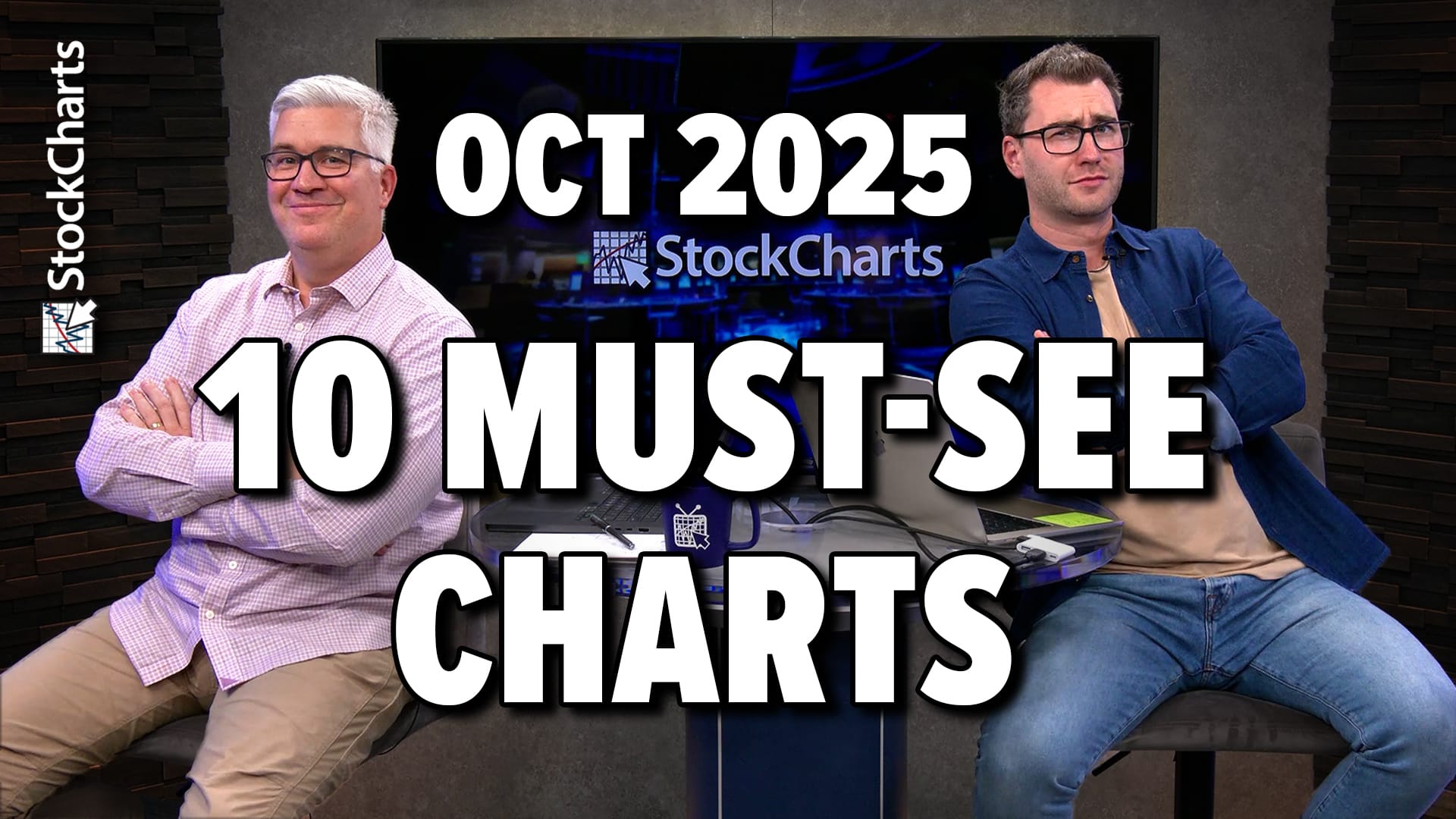FALLING DOLLAR, RISING RATES AND RISING OIL CAUSE STOCK SELLING -- BARRICK GOLD HITS 5 YEAR HIGH -- BAKER HUGHES HAS BULLISH TRIANGLE -- A DECADE FOR HARD ASSETS
ANOTHER LOOK AT RSI AND ADX ... It looks like I got a little too cute with my short-term reading of the RSI and ADX lines. Since I've gotten several questions on them, and given today's stock selling, I need to do some more explaining (and a little back-tracking). All the major stock indexes have been in a short-term overbought condition for nearly two weeks -- including the QQQ. I've been focused primarily on the Nasdaq 100 Shares (QQQ) because it's been the strongest index and leads the way for the rest of the market. Chart 1 shows the QQQ with the same indicators I showed yesterday (except for the Bollinger Bands). The 14-day RSI line moved into overbought territory over 70 near the start of last week and stayed there (until today). In a strong uptrend, a market can get overbought and stay there for awhile. The fact that the RSI line has dipped back under 70 today, however, suggests that a short-term pullback is likely. Which brings us back to the ADX line and its companion DI lines.

Chart 1
COMBINING THE ADX AND DI LINES... The three lines at the bottom of the QQQ chart are part of the Directional Movement System. The green and red lines represent buying and selling pressure respectively for the last 14 days (the same period as the RSI). The green (+DI) line crossed over the red (-DI) line during September which is a bullish signal. The black ADX line (Average Directional Index) is basically the difference between the two DI lines. When the ADX line is rising, that means that the current trend is still in force. There are two initial danger signs of a short-term trend reversal. One is when the black ADX line moves over the green +DI line (which one of our sharp-eyed readers reminded me of yesterday). A second danger signal is when the ADX moves over 40 which it has also done. It reached 45 earlier this year (but a reading over 40 puts it in overbought territory). The third sign of trouble is when the ADX line actually turns down. A fourth warning is when the 14-day RSI falls back under 70. Three out of those four warnings have taken place. The only one missing is a downturn in the ADX line. The fact that the two DI lines, however, are starting to converge means that the ADX should start to drop. For an actual "sell" signal to occur, the green line has to cross below the red line. A downturn in the ADX is simply a profit-taking signal (for short-term traders). In any setback, the dashed 20-day average would be the first line of support. Admittedly, I thought the rally had a bit further to run before its overbought reading led to some short-term selling. Mr. Greenspan's comments today ended that hope.
BETTER LATE THAN NEVER... Somewhere in between the recent election and today, Mr. Greenspan concluded that our huge trade deficit and a collapsing dollar weren't necessarily good things. He even suggested that foreigners might get tired of financing our huge deficit or require higher interest rates to do so. That would reduce foreign buying of dollars and U.S. bonds and stocks. [I seem to recall writing recently that a falling dollar would eventually push interest rates higher and push global money to foreign markets]. Part of that chain reaction would come from rising Asian currencies (like the yen and the yuan) since Asian bankers wouldn't need to buy Treasuries to keep the dollar from falling. Right on cue today, the Japanese yen soared to a four-year high against the dollar. The resulting sharp drop in the dollar pushed gold and oil prices higher along with bond yields. Please see my earlier comments on those markets (November 19, 2004). That combination proved too much for an overbought stock market. And, not surprisingly, interest-rate sensitive stocks fell the hardest.

Chart 2
BANK INDEX BACKS OFF FROM PREVIOUS PEAK ... Along with most financial stocks, banks took it on the chin today. [That's because rate-sensitive financials usually do worse in rising rate environment]. The chart shows that the Bank Index (BKX) is meeting with new selling right at its early 2004 peak. Its relative strength line, which had turned up during May, has fallen to a three-month low. If rising rates do start to become a problem for the market, we'll see it first in financial shares like the banks. That may be a good argument for starting to lighten up on interest-sensitive groups like financials, utilities, and REITs which have been big beneficiaries of historically low long-term rates. When rates start to rise, money coming out of rate-sensitive groups usually moves into commodity stocks like gold and oil. And that's what's happening.
BARRICK GOLD HITS FIVE-YEAR HIGH ... Earlier today, I showed ABX hitting a new 52-week high. Actually, it's doing a lot better than that. The monthly bars in Chart 3 show the big gold stock trading at the highest level since 1999. And it still has a long way to go to reach its 1996 peak near 32. Chart 4 shows a point & figure chart for ABX. Its given five buy signals since August of this year -- the last one taking place this week at 23.48. A protective sell stop can be placed under the last column of o's at 22.56. [The p&f box sizes in Chart 4 are based on percentage changes -- as opposed to a more traditional box size. That sometimes gives better signals].

Chart 3

Chart 4
BAKER HUGHES HAS BIG BULLISH TRIANGLE... Back on September 28, I talked about the fact that while the energy sector was overbought on a short- to intermediate-term basis (and due for an October pullback), I felt that the long-term energy trend was higher and that the oil service group provided the best energy value. One of the stocks I showed was Baker Hughes, which is the biggest holding in the Oil Service Holders (OIH). The chart I showed then is repeated in Chart 5. The monthly bars show BHI during September breaking the upper line of a seven-year "symmetrical triangle". Since then, the short-term price dip has bounced off that trendline, which should now function as support. Chart readers know that the length and height of that bullish triangle call for an probable test of its 1997 high -- and eventually a move into record highs. That bodes well for the stock, the oil service group, and the energy sector. It also suggests that high energy prices are here to stay. That's another side-effect of the falling dollar and the major bull market in commodies. That's one of the reasons why my outlook for the stock market turns more cautious as time goes on.

Chart 5
A DECADE FOR HARD ASSETS... With rising energy prices finally filtering through to higher producer (PPI)and consumer (CPI) prices, it's just a matter of time before long-term rates start rising as well. [Mr. Greenspan has dismissed the inflationary implications of rising commodity prices, but he may change his mind on that as well]. A falling dollar, rising interest rates, and rising oil prices. That's going to be a tough environment for stocks over the next few years. Gold and oil stocks, however, should continue to thrive in that environment. That's not unlike the decade of the 1970s when we had a weak dollar, rising commodities and oil, rising interest rates, and a flat stock market. Hard assets were the big winners during that decade. I believe this decade will see much of the same. To make that point visually, Chart 6 plots a ratio of the CRB Index divided by the S&P 500 over the last thirty years. The rising ratio during the 1970s (see first circle)showed commodities doing better than stocks. After a two-decade period of underperformance, commodities are once again doing better than stocks (see second circle). Notice also that the CRB/SPX ratio has broken a long-term down trendline. We probably won't see an exact replay of the 1970s. But the long-term chart shows that the pendulum has swung toward hard assets in the new millennium. Those generational rotations usually last for a long time. I hope the Fed knows how to read charts.

Chart 6
LOOKING FOR S&P 500 SUPPORT LEVELS... The daily chart for the S&P 500 for the last year pretty much tells the tale. The trend is still up. But its 14-day RSI line is in overbought territory for the first time since last January. Its daily MACD lines are also up against their early 2004 high. That being the case, and given today's negative intermarket trends, a pullback isn't too surprising. The key point is how much of a pullback do we need to start getting a little worried. One way to judge that is to look at where the previous peaks are. Working from the left side of the chart, that would put potential support points at 1163, 1150, and 1146 -- and the October peak at 1140, which may be the most important. That's because a pullback to 1140 would be a 50% retracement of the last upleg starting in late October and a 50% retracement of the entire upmove that started in August. As long as prices stay over that level, I'm not going to get too concerned. If it doesn't, I will. The point & figure boxes in Chart 8 also show that the S&P has suffered a three-box reversal into the down (o) column. That simply confirms that the market is entering a short-term pullback. So far, the p&f boxes don't show any serious trend damage.

Chart 7

Chart 8
SOX CLOSES UNDER 200-DAY LINE, OSX JUMPS... The final two charts shows another reason for Friday's stock setback. The Semiconductor (SOX) ended the week back below its 200-day moving average. Since Friday closes are the most important of the week, that's represents a disturbing setback. That contributed to selling in the technology sector. At the same time, crude oil jumped over two dollars on Friday and gave a big boost to the oil service group and energy stocks in general. That's another reason to take on a more cautious view of the market over the short-run.

Chart 9

Chart 10













